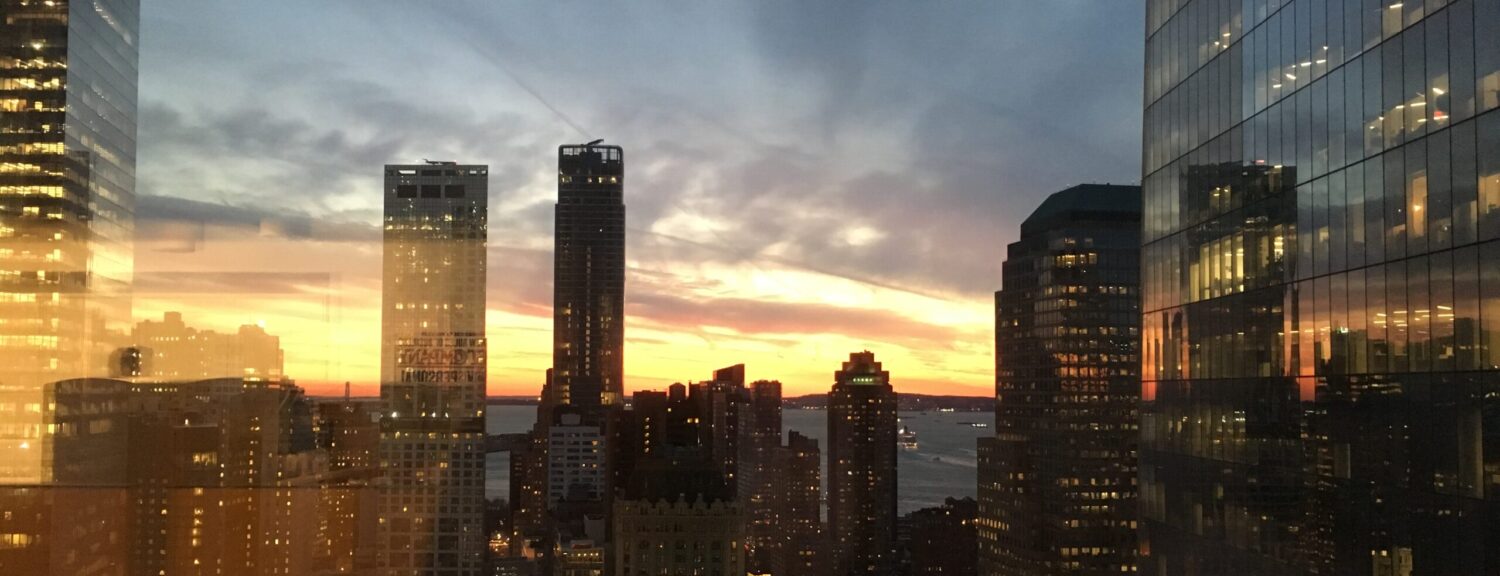
“All art asks you to notice something, to pay attention.” She said it fairly early on in our virtual studio visit, but those words seem pretty integral to understanding Jessica Stockholder’s perspective on art. Her work certainly adheres to that principle, ranging from enormous multi-element installations to smaller pieces that come across almost like small sections pulled from the larger installations.
Stockholder herself is the kind of personality that forces you to stop and pay a little bit more attention. She’s clearly used to commanding a classroom—she teaches art in addition to creating it. And while she claimed that she’s “not a big theory person,” Stockholder is anything but unfamiliar with the basics of art theory and art history—she knows where she fits in the grand scheme of the art world and all of the various trajectories that run through it. In conversation with our group, she spoke with the kind of casual confidence earned through years of professional success and total conviction in the statements that she and her art make.

4184e06458b4568/f1cd25a41f57e711cd9193cfe03d50f3.jpeg
Mostly, Stockholder said, she’s spent a large chunk of her art career trying to make sense of complexity and contradiction, to see the world from multiple points of view. While I obviously cannot speak for Stockholder, I can speak as a viewer of her work, and from that standpoint, I can say that she’s been successful—her work both makes spaces simpler and more complex, and their scale creates any number of new viewpoints for any given space that they inhabit.
Like most of the people we’ve spoken with this semester, Stockholder is an established name, one with many shows and quite a lot of success to her name. But even with all of the success and all of the accolades, Stockholder brought a particular gravity to our visit when the topic of what a professional art career actually looks like came up.
“I’m not super rich, and if I was, I probably wouldn’t be teaching.” Those words kept popping up in Stockholder’s phrasing—“I’m not super rich.” It’s an interesting conundrum, the way that money and labor and patronage regularly recur in the conversations we’ve had in these studio visits and artist talks… and it’s true: for all the vast amounts of money that move through the art world, artists rarely see more of it than the basics that they need to survive, and those are the most successful of the bunch. Such a frank statement about the finances and the reality of creating art isn’t disheartening, exactly, but it is a stark reminder of reality—especially when placed in the context of an art education. Every art professor or teacher I’ve ever had was one who used teaching to supplement their income. Artists who don’t teach exist—we’ve spoken with some in this course, even—but it was yet another reminder that of course the art world isn’t as simple as “go, create something, make it something that matters,” the way that so many who are more distant from the reality of the art world might believe.

It’s not even that this reality is new to me—my dad has an art degree. I was an art major up until last year, and I’d spent a lot of time thinking about grad school and mapping out career options. I know perfectly well that without a vast inheritance or marrying rich, art is always a balance of labor, passion, and survival—a delicate balance in which survival (and money) often come out ahead. Last Friday’s conversation wasn’t the first time that a conversation about the harsh financial reality of creating art for a living has come up in conversation—far from itl that’s been a recurring theme in this class since the first week. Coming from someone like Stockholder, who is still so passionate about her work and her process… it doesn’t feel like a rebuke or a warning. Instead, it’s just another thing to keep in mind—art is beautiful, wonderful, and terrible. It instills in us an impulse to create, to push further, to keep breaking down and reframing the chaos of this world we live in. And we are tied to it. We do what we must to remain in contact with it. And that’s just the way it is.
Whether or not Stockholder’s goal from the beginning was to teach, and whether or not she particularly wants to be teaching, it’s clear that she’s a good teacher. Pragmatic. Knowledgeable. Passionate when it matters. Speaking with her was a privilege, and one that I doubt I’ll forget anytime soon.
